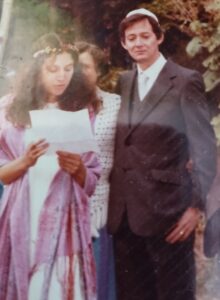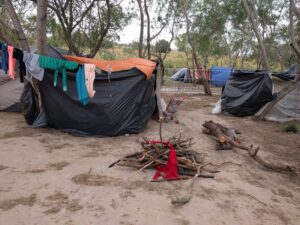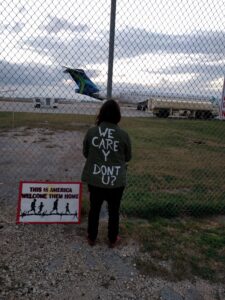On the pre-visit questionnaire for a recent medical appointment, I once again came face-to-face with the familiar anxiety screening questions:
–Are you feeling nervous, anxious, or on edge?
–Are you worrying too much about different things?
–Are you feeling like you can’t stop or control your worrying?
–Are you feeling afraid, as if something awful might happen?
Though I dutifully clicked the “no” box for each of these questions, I wanted to add in a “but” and a nervous giggle. I knew I didn’t have what they were looking for in terms of clinical anxiety, but how could I not feel anxious, depressed and on edge every time I scroll social media, hear a blip on NPR, or open my email?

Vincent Le Moign, CC BY 4.0 <https://creativecommons.org/licenses/by/4.0>, via Wikimedia Commons
How could I not be worried?
And what weighs on me more: how do I balance my mental health by controlling worry, with the stories of people being literally kidnapped and sent to CECOT, a torturous prison in El Salvador. (Despite the media hype and MAGA speech about gang affiliations, 75% of the people in CECOT have no criminal history!)
How can I not worry when students are arrested, detained, and threatened with deportation for peaceful protesting, when visas of international students are revoked for no apparent cause, when long-time foreign residents are suddenly kicked out of the country?
How can I not worry when due process has been suspended and court orders are being ignored? And when collateral arrests in ICE raids include U.S. citizens with no rectification or apology?
How can I just let these stories slide off me like a momentary annoying wave that rolls out to sea as I continue with my life? And what’s happening to immigrants is only one of many disturbing developments since the new administration took office. How can I not worry about the BIPOC and LGBTQ communities? About women? About children in poverty?
Like many American Jews who came of age in the 60s and 70s, I grew up in the shadow of the Holocaust. Even though my family wasn’t directly impacted, the stories were told: The Germans watched as the Jews were rounded up… marched off…
Of course there were many good people in Nazi Germany who risked their lives trying to help those who were targeted. And I don’t believe the rest were all bad people. I’m sure there were some who naively believed the lies being told. And there were probably others who were told not to worry. Take care of yourself. As we’re being told every day. Even by our colleagues in the activist world.
I know I do need to take care of myself–and that spending more time worrying is not going to help. But the same perfectionist tendency that tries to rule my artistic life has been clawing at my activist self. If I’m not doing everything I could possibly do at this moment as perfectly as possible, than I’m likely not doing enough, it tells me. So the conundrum is figuring out ways to do even more than I’m doing and to be as effective as possible, without succumbing to the paralyzing guilt of perfectionist demands that minimizes the impact of my actions and just leads to more worrying.
As much as I like this video, the Bobby McFerrin song, “Don’t Worry, Be Happy” doesn’t seem to apply right now. I need to worry AND I need be happy, but not so worried or so happy that I don’t take every opportunity I can to act.
Subscribe at http://ddinafriedman.substack.com

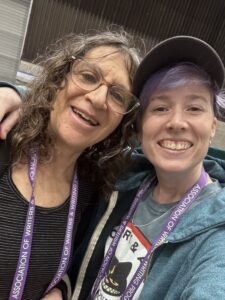 And one thrill from this past AWP was to meet two of these people for the first time: Sage and Carla in real life.
And one thrill from this past AWP was to meet two of these people for the first time: Sage and Carla in real life.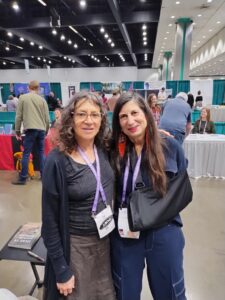
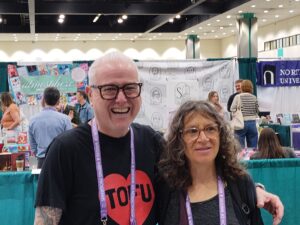
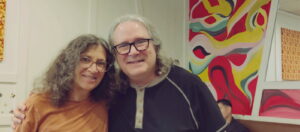
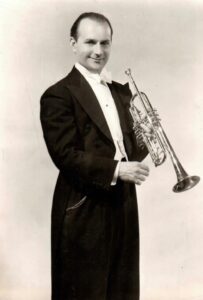

 This morning, I’ve taken another step in returning to normalcy, writing with some of my favorite pals in the Forbes Library Zoom Group, where my friend and colleague,
This morning, I’ve taken another step in returning to normalcy, writing with some of my favorite pals in the Forbes Library Zoom Group, where my friend and colleague,  So, I’m grateful for routines, but also glad, that unlike my father, I’m more comfortable flitting in and out of them as needed. And once my latest batch of homemade granola is depleted, I’ll enjoy switching my breakfast routine to the several boxes of unopened muesli I brought home from New York, so I can keep remembering my father, whether or not I make it to the computer right afterwards.
So, I’m grateful for routines, but also glad, that unlike my father, I’m more comfortable flitting in and out of them as needed. And once my latest batch of homemade granola is depleted, I’ll enjoy switching my breakfast routine to the several boxes of unopened muesli I brought home from New York, so I can keep remembering my father, whether or not I make it to the computer right afterwards.